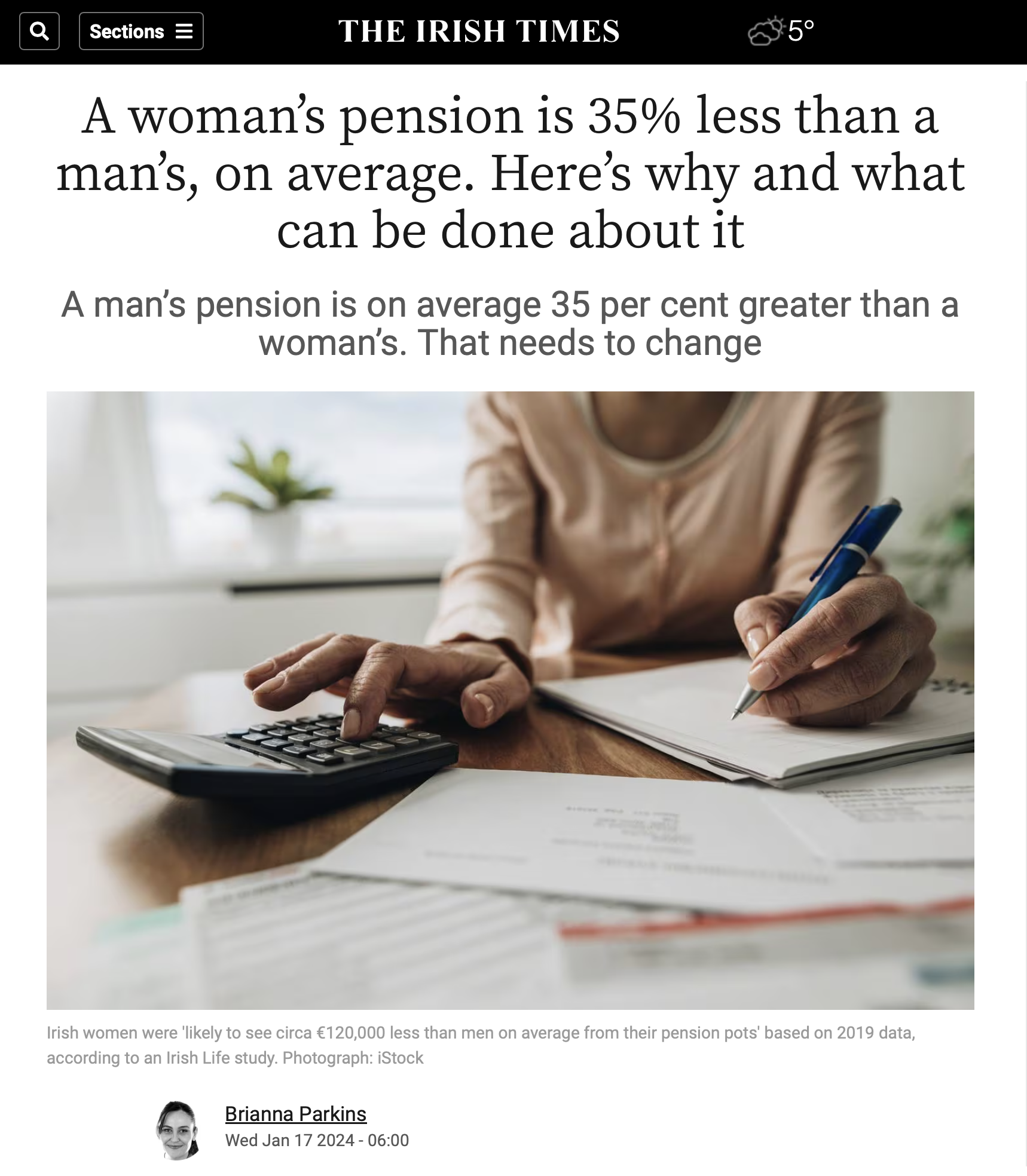A man’s pension is on average 35% greater than a woman’s. That needs to change.
Brianna Parkins
The Irish Times
17th January 2024
For Ireland’s current and future workers, the hints that it’s unwise to rely solely on the State pension for retirement have been getting louder. From attempts to raise the pension age, projections for a rapidly ageing population, dropping home ownership rates and the introduction of Ireland’s auto-enrolment pension scheme – the message has been clear: if you want a comfortable retirement, your best bet is to fund it yourself while taking every employer contribution and government tax break you can get on the way.
Yet this could leave nearly half the population vulnerable to even more financial disadvantage. There are a few different numbers on the state of women’s pensions in Ireland and none of them are good. The latest Economic and Social Research Institute findings – from 2019 – puts Ireland’s pension gender gap at 35 per cent. For comparison, that’s more than three times bigger than Ireland’s gender pay gap of 9.6 per cent according to the Central Statistics Office’s latest figures. An Irish Life report found Irish women were “likely to see circa €120,000 less than men on average from their pension pots” based on 2019 data.
That’s a problem when everyone is living longer than ever, especially women in Ireland who have a life expectancy of 85. Outlasting men by about four years.
So why do Irish women end up retiring with less in their pensions than men?
John Kearney, a director of Provest Pension Consultants, welcomes the fact that 750,000 additional people might be helped to save for retirement, women could be let down by two things.
The first is the €20,000 income limit which he says “will more than likely disproportionately exclude women and potentially widen the existing gender gap”, while the second is the “lack of flexibility to increase payments or make lump-sum contributions to cover any periods of unpaid leave or career gaps may result in worse retirement outcomes for women”.
The scheme in its current form doesn’t offer tax relief or increased employer contribution in the case where women returning from a break might need to increase their contributions to make up the shortfall.
Countries such as Australia allow one partner to make tax-exempt top-ups to another’s superannuation when their income drops below a certain level or they take a break or in some cases allows for increased payments up to a set ceiling to make up for the shortfall on the return to work. Which means the blueprint is there for Irish governments to close the gap.
While Kearney praises tax reliefs on Irish pensions he says “the system is rigid and inflexible in how it operates” and “tends to favour those who work full-time and does not particularly support career patterns more often associated with women”.
“Gender pay gap at Eir stands at 5.5%, down from more than 7% in 2022.”
As a solution “one potential option would be for the Government to augment or enhance their contribution for those who take such leave”.
But, in the meantime, women can try to mitigate the gap by taking actions within their sphere of control with Kearney stressing the need for women to educate themselves and each other on “the benefits of having a pension plan, the benefits of tax relief, the impact that periods of unpaid leave will have on retirement savings and the downfalls of over-reliance on the State pension”.
According to the ESRI, just 28 per cent of women receive a private or occupational pension income compared to 55 per cent of men in Ireland. Due to compound interest and the way we think about pensions, older women can be discouraged from starting one because “it won’t be worth it”.
“It may take a three-pronged approach between employers, the Government and individual actions to solve the pension gap”.
John Kearney is a director at Provest Pension Consultants.


